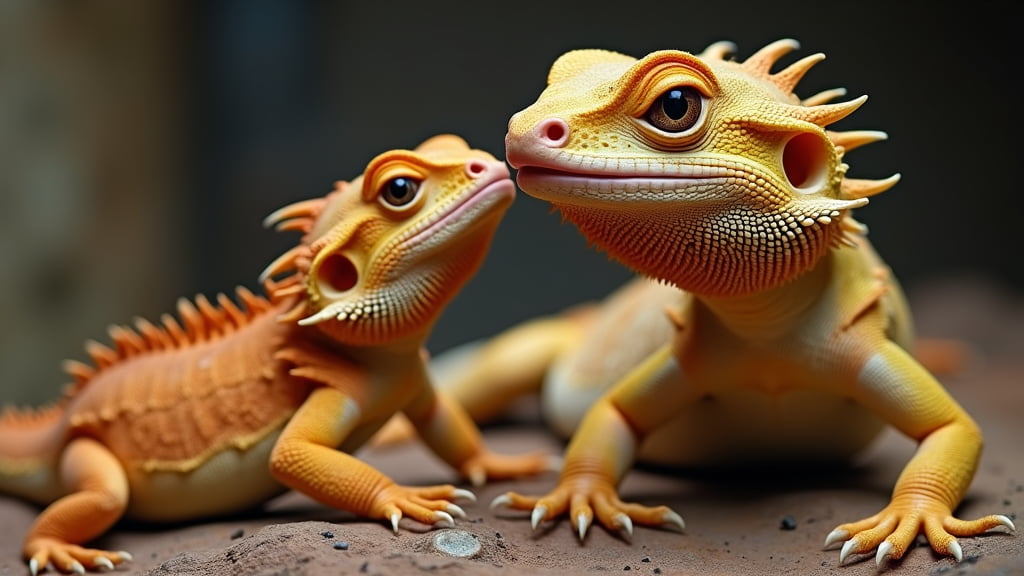When it comes to feeding your bearded dragon, it’s easy to feel overwhelmed. These fascinating reptiles have specific dietary needs that vary depending on their age, size, and health. Fear not, fellow herp enthusiast! Through my years of owning these delightful creatures, I’ve gathered ample knowledge and insights to help you nail down a perfect feeding schedule. Let’s dive in, shall we?
Meta Description: Discover the optimal feeding schedule and dietary needs of your bearded dragon. Our comprehensive guide offers expert advice, insights, and practical tips for ensuring your pet thrives.
Understanding Bearded Dragon Dietary Needs
Before delving into how much to feed a bearded dragon, it’s vital to understand its dietary requirements. Bearded dragons are omnivorous, enjoying a mix of insects and plant-based foods. However, the right balance changes as they age.
The Diet of Juveniles
Juvenile bearded dragons (up to 6 months old) are like tiny, scaly dynamos. Their voracious appetites support rapid growth and development.
- Insects: Provide them with 2-3 feeding sessions per day, offering as many live insects as they can eat within a 10-15 minute window. Common choices include crickets and dubia roaches. Ensure these insects are gut-loaded and dusted with calcium powder.
- Greens and Veggies: Offer a small salad of greens and thinly sliced vegetables once a day. Though juveniles will focus on insects, introducing veggies early fosters good eating habits later on.
Feeding Adult Bearded Dragons
Once your bearded dragon reaches adulthood (around 18 months), its diet should shift to favour more plant matter. This change not only mimics their natural dietary evolution but also supports long-term health.
Balancing Insects and Vegetation
For adult bearded dragons:
- Insects: Reduce insect portioning to once a day, 3-5 times a week. Again, they should eat what they can in a 10-15 minute span, ensuring the insects are gut-loaded and dusted with calcium.
- Greens and Veggies: Increase the portions, allowing them access to fresh salads daily. A good mix might include collard greens, mustard greens, and a variety of squash.
Portion Control and Monitoring
Adult bearded dragons can become overweight if allowed free rein over their diet. Monitor their body condition:
- Signs of Overfeeding: Look for excess fat stores around the base of their tail and a generally bloated appearance.
- Adjusting Portions: Should you suspect obesity, gradually reduce portions while ensuring they still receive ample nutrition.
Special Considerations and Seasonal Adjustments
From my experience, bearded dragons may eat less during colder weather or brumation periods (a hibernation-like state many reptiles enter).
Handling Seasonal Appetite Changes
- Brumation: If your beardie becomes lethargic and eats less, this is likely brumation. Offer food less frequently but always fresh water.
- Reintroducing Regular Feeds: Post-brumation, slowly reintroduce their regular feeding schedule to allow them to regain their strength.
Case Study: Charlie the Bearded Dragon
To illustrate, let’s consider Charlie, one of my past bearded dragons. During brumation, the otherwise voracious eater nearly stopped accepting food. By closely monitoring and reducing feeds, Charlie emerged in spring without any health detriments. As the temperatures rose, his appetite returned, and he bounced back to his regular, healthy self in no time.
Conclusion: Striking the Perfect Balance
Ultimately, the key to feeding your bearded dragon lies in understanding their unique needs and adjusting their diet accordingly. From the insect-heavy meals of juvenile dragons to the veggie-laden plates of adults, each stage of life requires careful consideration.
If in doubt, always consult a reptile-savvy veterinarian to tailor a diet that meets your pet’s specific needs.
Remember, a well-fed bearded dragon is a happy bearded dragon!
For more on their care, check out our Bearded Dragon Diet guide or visit our product link.
Feel free to share your experiences or ask questions in the comments below. I’m here to help your bearded dragons thrive!

